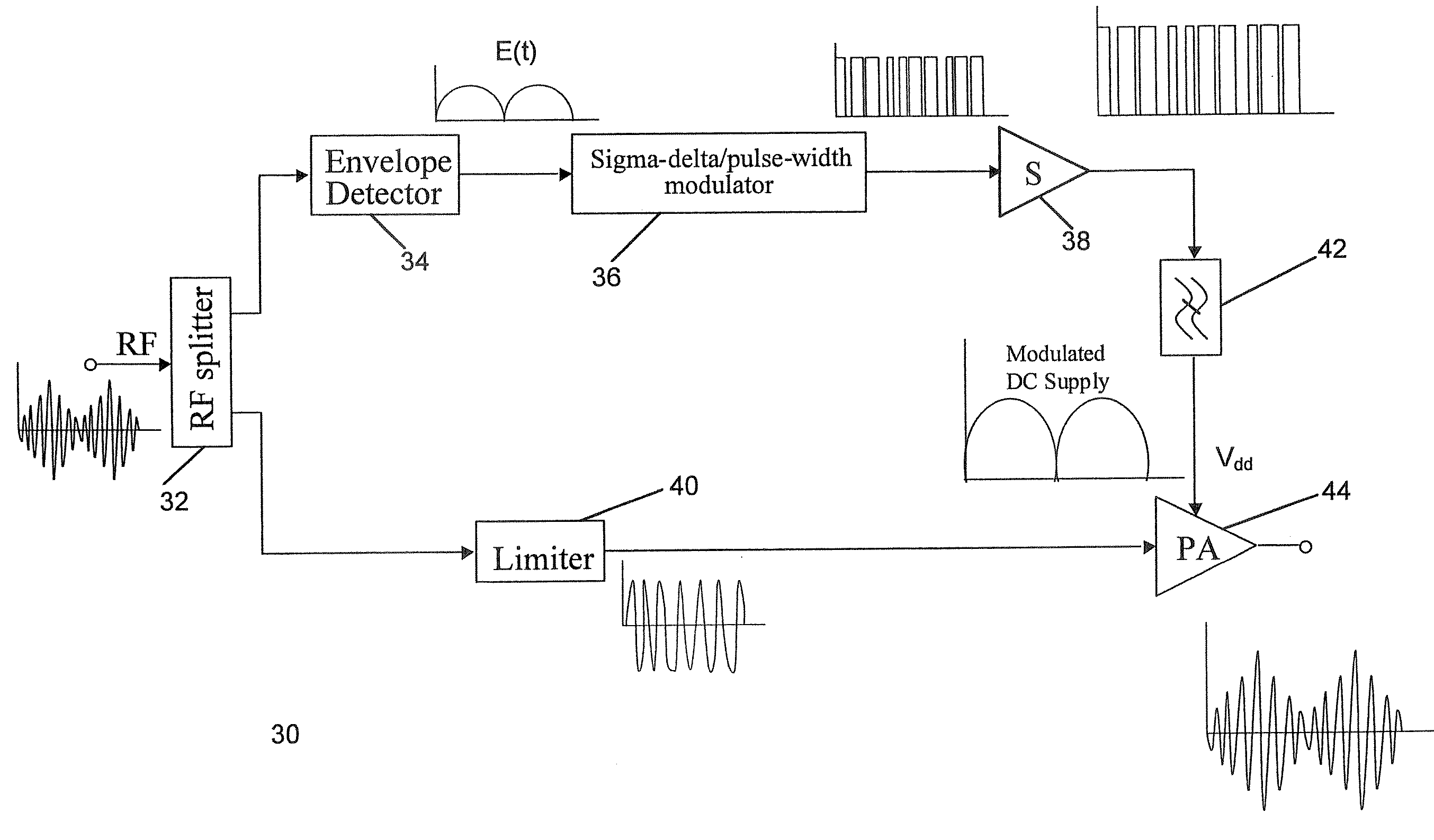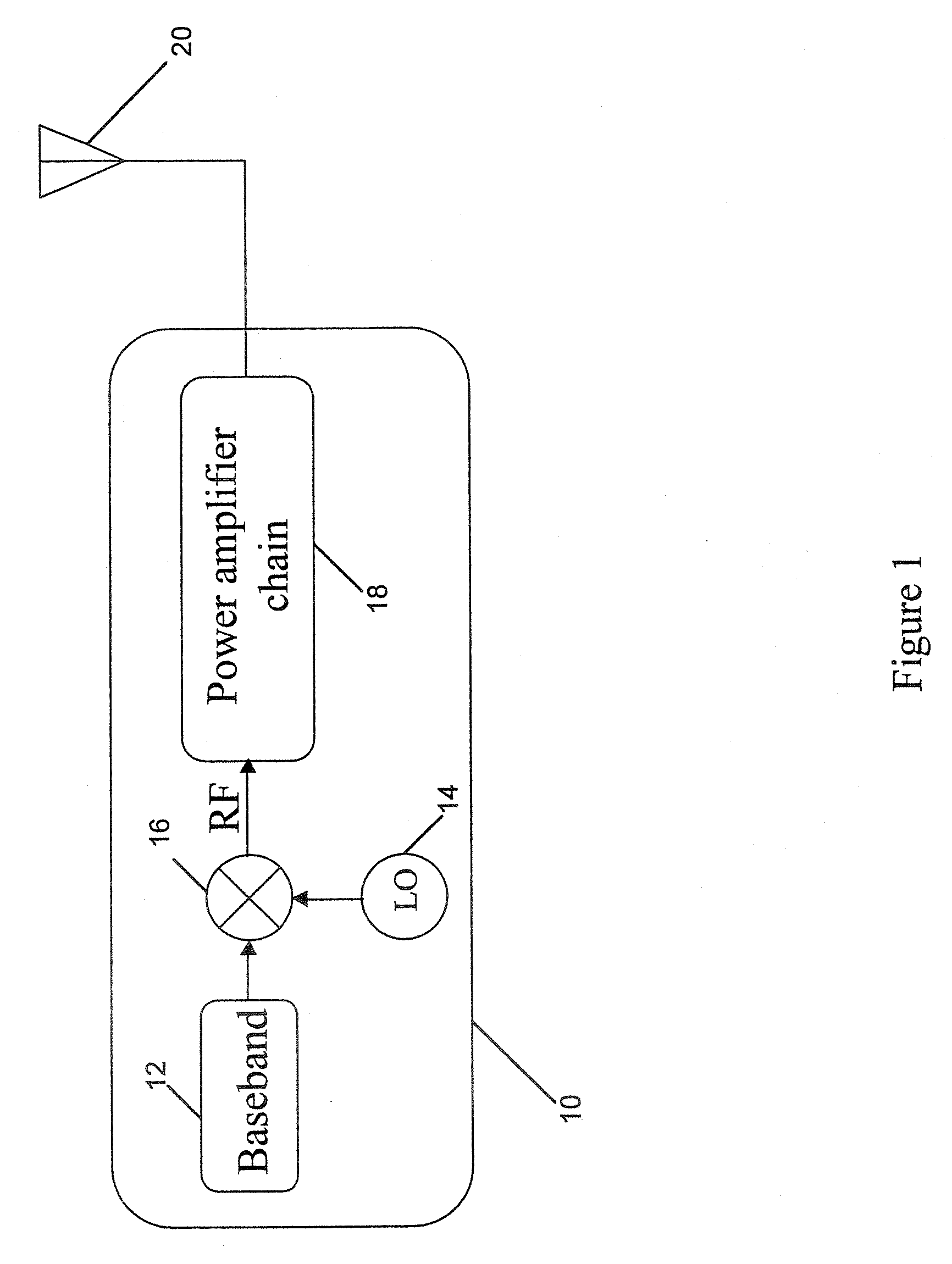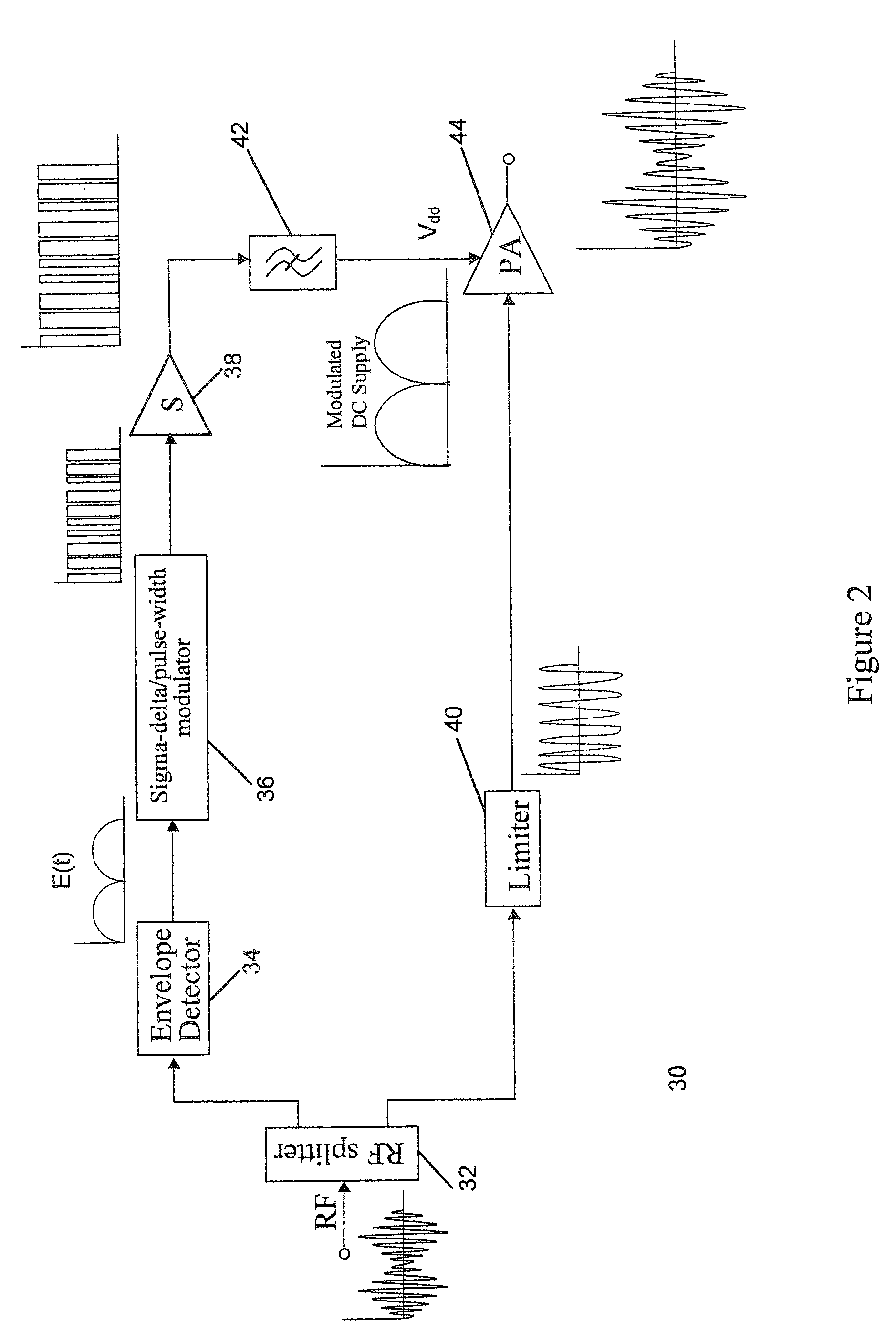Signal processor for use with a power amplifier in a wireless circuit
a technology of signal processor and power amplifier, which is applied in the direction of amplifier modification to reduce non-linear distortion, gain control, transmission, etc., can solve the problems of reducing power efficiency, significant distortion, and power amplifiers typically dominating the power consumption of these terminals
- Summary
- Abstract
- Description
- Claims
- Application Information
AI Technical Summary
Benefits of technology
Problems solved by technology
Method used
Image
Examples
Embodiment Construction
[0045] A method and apparatus for processing signals prior to amplification is disclosed. In the following description, a number of specific details are presented in order to provide a thorough understanding of embodiments of the present invention. It will be apparent, however, to a person skilled in the art that these specific details need not be employed to practice the present invention.
[0046]FIG. 5 shows a circuit diagram of an RF amplifier 100 comprising a signal processor 80 according to an embodiment of the present invention. Referring to FIG. 5, the signal processor 80 comprises a splitter 82, envelope detector 84, sigma-delta / pulse-width modulator 86, limiter 88 and RF switch 90. The output terminals of the splitter 82 are connected to the envelope detector 84 and the limiter 88. The envelope detector 84 is, in turn, connected to the sigma-delta / pulse-width modulator 86. The output terminal of the sigma-delta / pulse-width modulator 86 is connected to the control terminal of...
PUM
 Login to View More
Login to View More Abstract
Description
Claims
Application Information
 Login to View More
Login to View More - R&D
- Intellectual Property
- Life Sciences
- Materials
- Tech Scout
- Unparalleled Data Quality
- Higher Quality Content
- 60% Fewer Hallucinations
Browse by: Latest US Patents, China's latest patents, Technical Efficacy Thesaurus, Application Domain, Technology Topic, Popular Technical Reports.
© 2025 PatSnap. All rights reserved.Legal|Privacy policy|Modern Slavery Act Transparency Statement|Sitemap|About US| Contact US: help@patsnap.com



